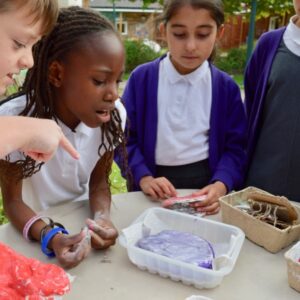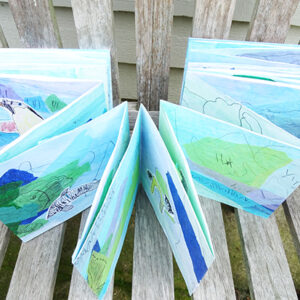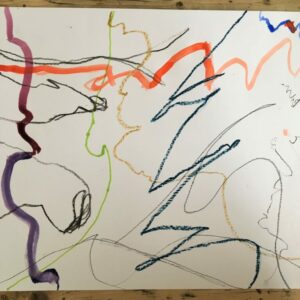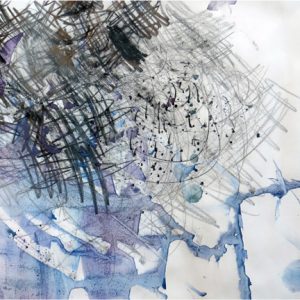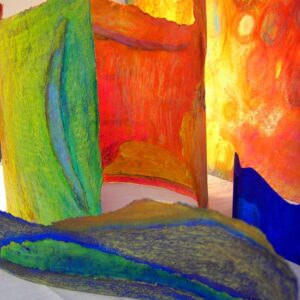Pathway for Years 1 & 2
Disciplines:
Drawing, Making, Sketchbooks
Key Concepts:
-
That artists sometimes use sound to inspire their work.
-
That artists sometimes work in partnership with musicians.
-
That we can use both aural and visual senses to make art.
-
That we can draw from our imagination, using lots of different kinds of abstract marks to express our feelings, whether they are quiet and focussed, or loud and expressive.
-
That we can be inventive and make objects in 3 dimensions which make sounds, and which we want to interact with as humans.
In this pathway children are introduced to the idea that artists often work in partnership and are often inspired by other art forms – in this case music and the visual arts.
Children explore how other artists have used sound to inspire their artwork, and then go on to experiment with how they can use their mark making skills to both be influenced by, and to capture, the expression in music.
Children then explore making skills to collage or make inventive instruments, creating a class “orchestra”.
Medium:
Paper, Drawing Materials, Paint, Construction Materials
Artists: Kandinsky, Various “Projection Mapping” artists
If you use this resource in your setting, please tag us on social media: #InspiredBy @accessart (facebook, twitter) @accessart.org.uk (instagram) and share the url. Thank you!
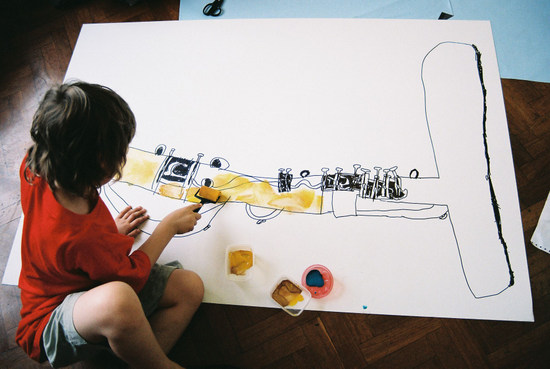
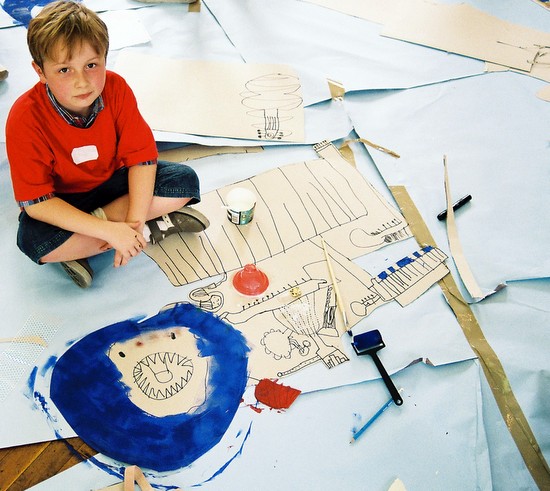
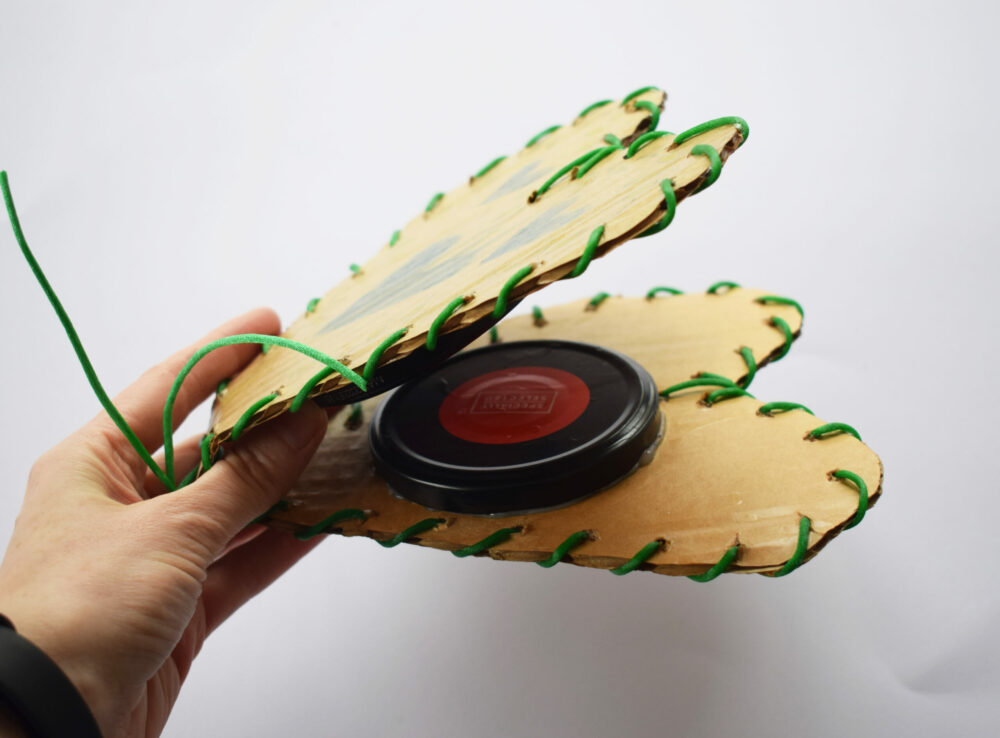

Teaching Notes
Find the MTP for this pathway here.
Curriculum Links
Geography: Adapt the music you listen and draw to, according to geographical region or continent to help develop sense of place.
Science: The 5 senses, the human body, materials.
Music: Rhymes and chants, musical instruments, combining sounds.
PSHE: Explore the music made from instruments from other countries, Collaboration, Peer Discussion.
I Can…
-
I have seen how some artists are inspired by other artforms such as music. I can share my response to their work, and listen to others.
-
I can listen to sounds, and use my mark making skills to make marks in response.
-
I can draw from observation whilst listening to a piece of music, and let the music inspire my drawing.
-
I can use my imagination and work on a larger scale to make drawings of imaginative instruments, or I can use my hands to invent musical instruments made from construction materials.
-
I can share my work with the class.
-
I can reflect upon what I have made and share my work with the class. I can listen to their responses to my work, and talk about my response to their work.
-
I can take photos of my artwork.
Time
This pathway takes 6 weeks, with an hour per week. Shorten or lengthen the suggested pathway according to time and experience. Follow the stages in green for a shorter pathway or less complex journey.
Materials
Soft B pencils, coloured pencils or pastels, handwriting pens.
Project 1: Paint an Imaginary Orchestra – Large (A1 or A2) cartridge paper or thin card, coloured paper, foil or metallic paper, marker pens, scissors, tape, paint, brushes.
Project 2: Making Musical Instruments – cardboard, wood, buttons, lids, shells, string, ribbons and other construction materials.
Pathway: Music and Art
A PDF of this pathway can be found here.
-
Aim of Pathway
The aim of this pathway is to introduce pupils to some of the links between art and music. Pupils use rhythm and sound to inspire artwork.
- Week 1: Slow Drawing
Drawing to a Metronome
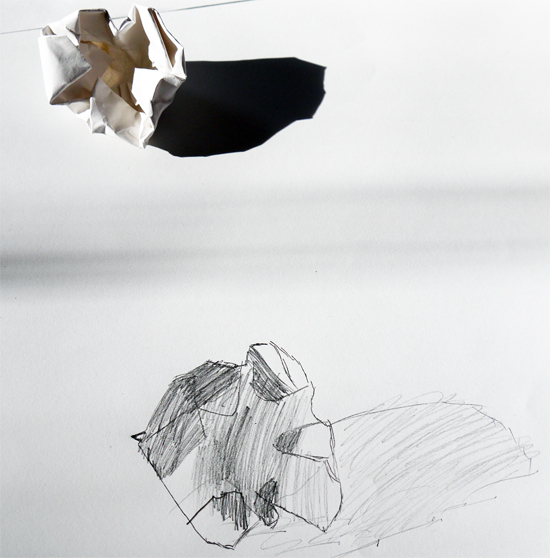
Settle students with some “Drawing to the Slow Rhythm of a Metronome“. Invite children to make careful, slow drawings with a sharp graphite pencil. Work in sketchbooks and introduce to children the idea that making drawings can be a quiet, slow, thoughtful activity.
- Introduce an Artist
Wassily Kandinsky

Explore the work of Kandinsky who was a pioneer in abstraction. Use the free to access “Talking Points: Wassily Kandinsky” resource to find out what synaesthesia is, and how it helped him to paint music. Encourage children to have their sketchbooks open to make some “Making Visual Notes“.
- Week 2: Work in Sketchbooks
Mark Making and Sound
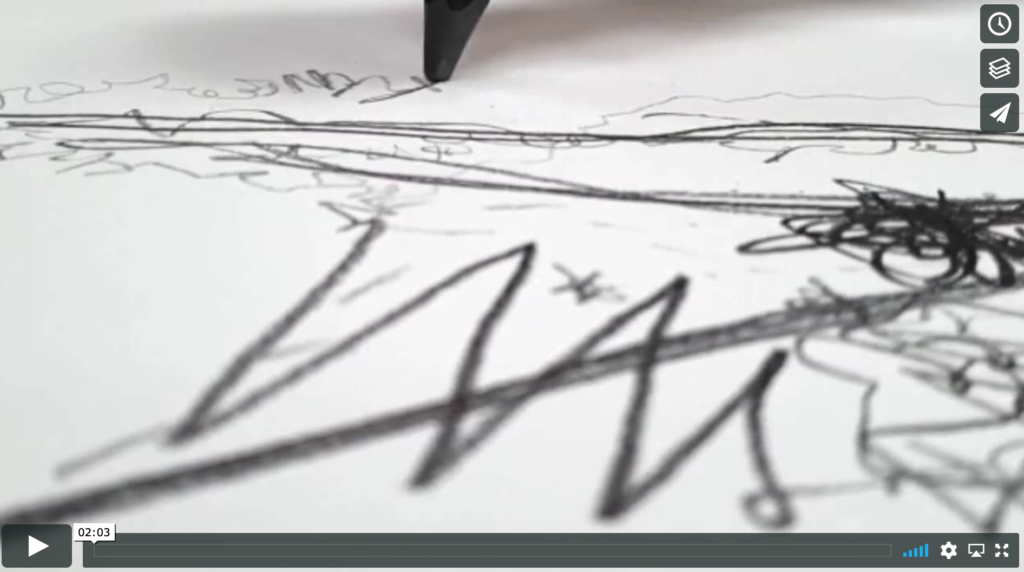
Enable learners to develop their mark-making skills with these 3 “Mark Making and Sound” exercises.
This activity explores how we can use sound as a stimulus to develop the kinds of marks we can make.
Children will find out how abstract mark making can capture the spirit of a piece of music.
Children will then take what they have learnt about rhythm and mark making into observational drawing.
- Introduce an Artist
Tomoko Kawao
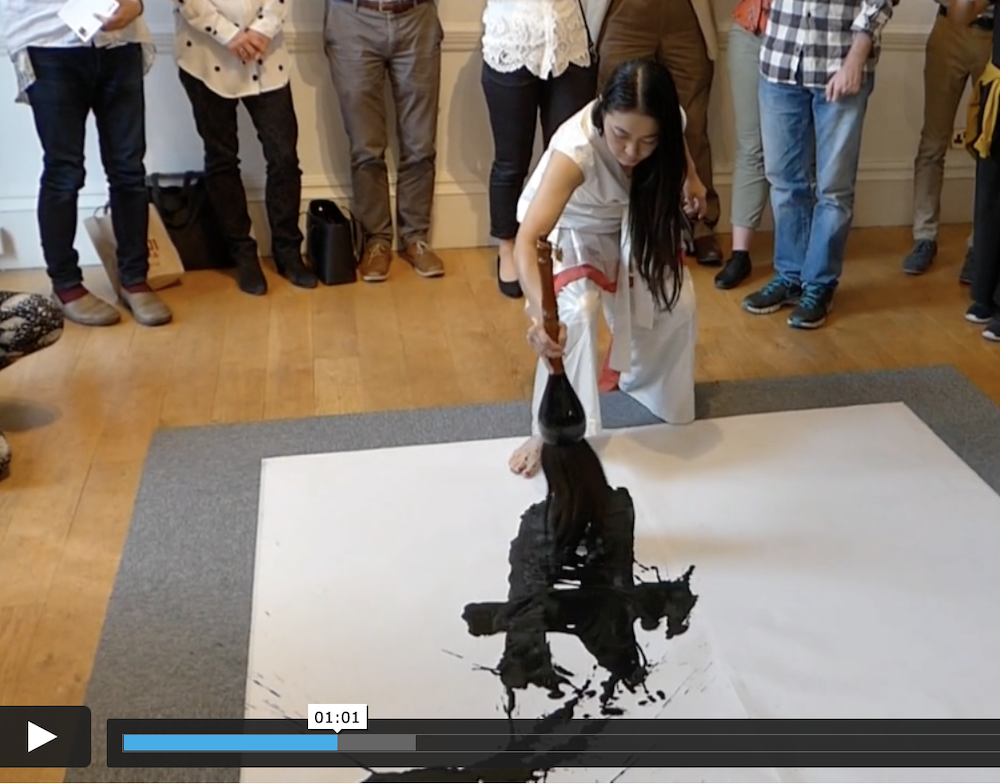 Explore the free to access “Talking Points: Tomoko Kawao” resource to discover an artist who makes large scale work using one unbroken movement of a brush.
Explore the free to access “Talking Points: Tomoko Kawao” resource to discover an artist who makes large scale work using one unbroken movement of a brush.Use the questions at the bottom of the resource to help guide your class conversation.
- Week 3: Sketchbooks
Show Me What You See
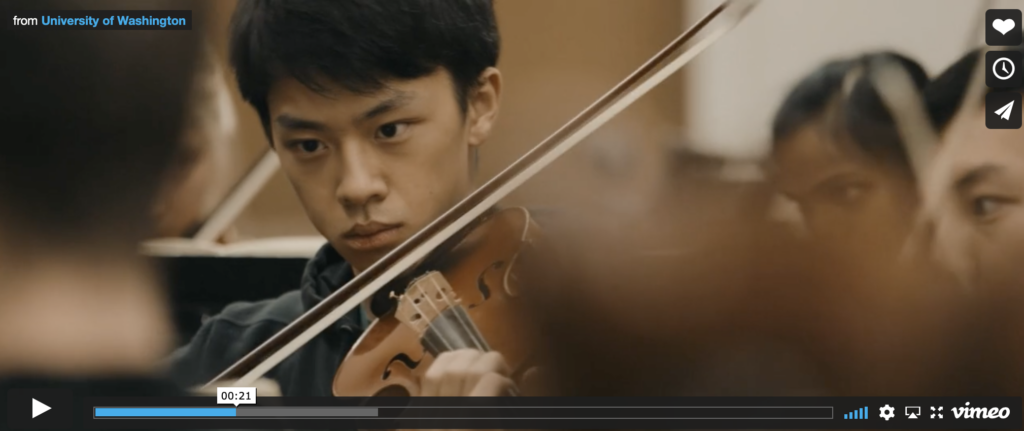 Working in sketchbooks, use the “Show Me What You See” technique to help pupils visually explore orchestras and musical instruments. Take inspiration from the free to access “Drawing Source Material: Orchestras and Instruments“.
Working in sketchbooks, use the “Show Me What You See” technique to help pupils visually explore orchestras and musical instruments. Take inspiration from the free to access “Drawing Source Material: Orchestras and Instruments“.During the exercise, draw the children’s attention to the visual elements of the artwork, including talking about shape, colour and composition. As well as using line in sketchbooks to describe shapes, also use colour (pastel, crayon, pens etc).
By the end of the session sketchbooks should be full of pupil’s interpretations of different elements (shapes, lines etc) from the video.
- Take a Break & Inspire
Exploring Projection Mapping
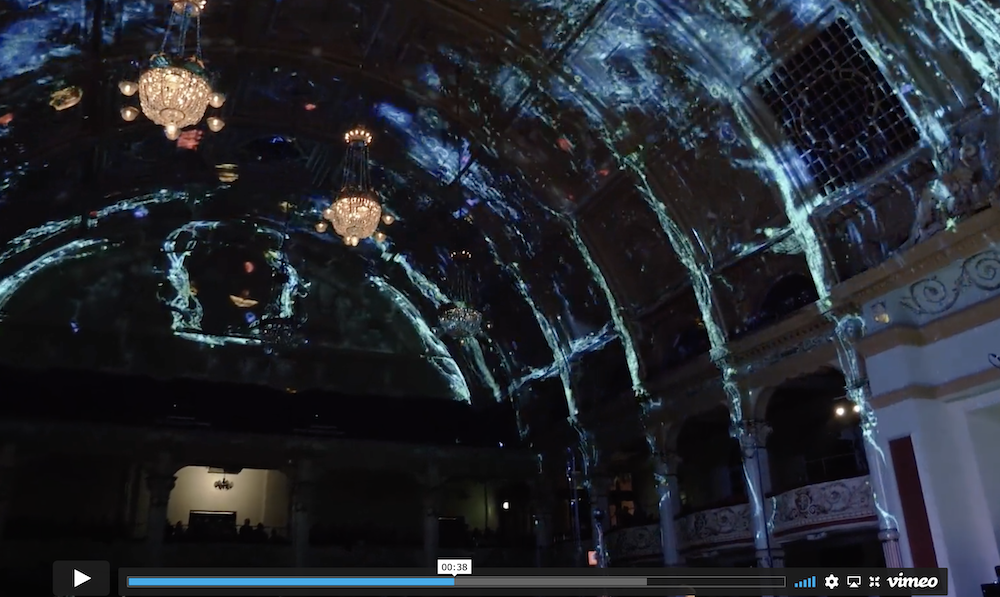 If you feel your pupils would benefit from being inspired by more art made by artists, introduce them to Projection Mapping and music with this video by Light Odyssey in our free to access “Talking Points: What is Projection Mapping“.
If you feel your pupils would benefit from being inspired by more art made by artists, introduce them to Projection Mapping and music with this video by Light Odyssey in our free to access “Talking Points: What is Projection Mapping“. Use the questions at the bottom of the resource to help guide your class conversation.
- Play
Paint Music with Google Arts & Culture
Finish the session with this fun interactive activity.
- Week 4 & 5: Find your Focus
Explore Making or Drawing Instruments
For the next two weeks work on one of the projects below.
- Option 1
Paint an Imaginary Orchestra
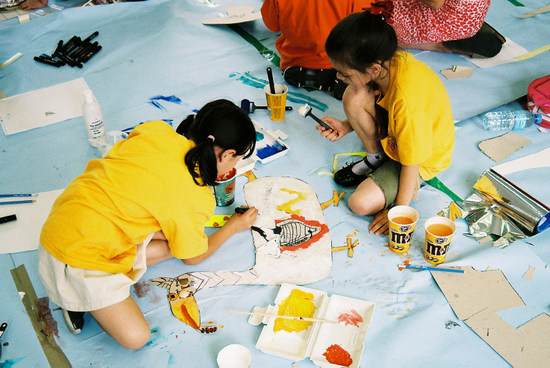
Start the session with “Backwards Forwards” drawings before moving on to creating a “Cheerful Orchestra“.
This workshop brings together mythical beasts and musical notes, however it can be adapted to link with curriculum topics such as animals or food.
Encourage children to draw large and fast so that they can explore a range of materials to create the details.
This resource is split into 3 different parts. Depending on time you can pick and choose which activities you’d like your class to do.
The first part of this resource explores inventing instruments. This is followed by responding to music with narrative. The final part of the activity entails children creating a self portrait of themselves playing an instrument.
By the end of the session children will have formed an extraordinary noisy orchestra.
-
Or…
- Option 2
Making Musical Instruments
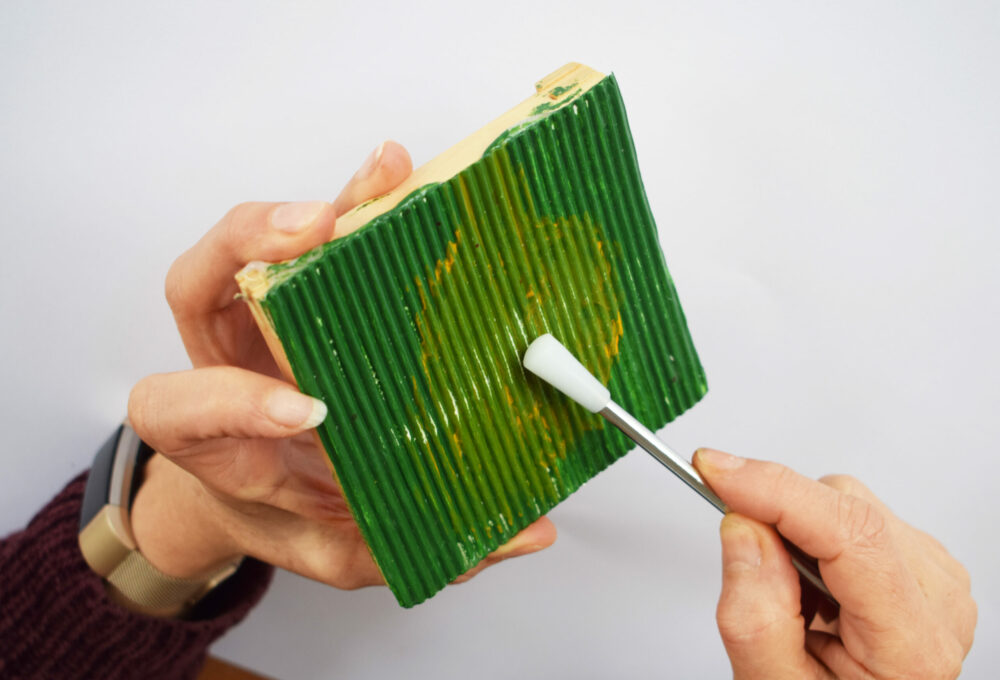
If you think your children would benefit, warm up using the “Making Prompt Cards” and follow on by creating music instruments below.
Explore recycled materials to “Make Musical Instruments” and explore sound making.
This activity not only explores the process of making but also how to produce different sounds and rhythms with the invented musical instruments.
Encourage children to make decisions about material, form, design and colour, experimenting using simple tools to create unusual, surprising sounds.
- Week 6: Reflect and Discuss
Present, Talk, Share and Celebrate

End the pathway by taking time to appreciate the developmental stages and the final outcomes in a clear space.
Depending upon the project option chosen, display the work appropriately including having open sketchbooks. Use the “Crit in the Classroom” resource to help you.
Encourage children to reflect upon all stages of the journey, and reference the artists studied.
If available, children can use tablets or cameras to take photographs of the work.
